About the Journal
Journal of Daylighting is a peer-reviewed international journal devoted to investigations of daylighting in buildings. It is the leading journal that publishes original research on all aspects of Energy, buildings, and lighting.
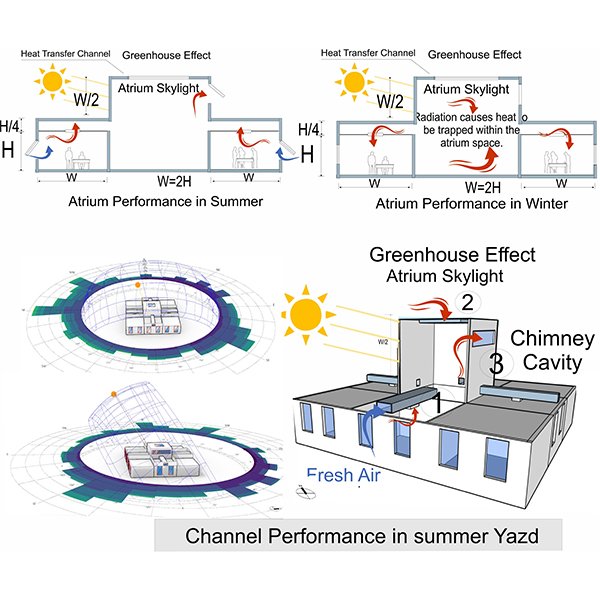
RESEARCH ARTICLE
Design Optimization of Atrium Skylights for Enhanced Office Building Performance
The increasing demand for energy and the impact of climate change underscore the necessity of energy-efficient building designs. This study optimizes atrium skylights as a passive design solution for Yazd, Iran aiming to enhance thermal and visual comfort.
Journal of Daylighting 12 (2025) 520-547
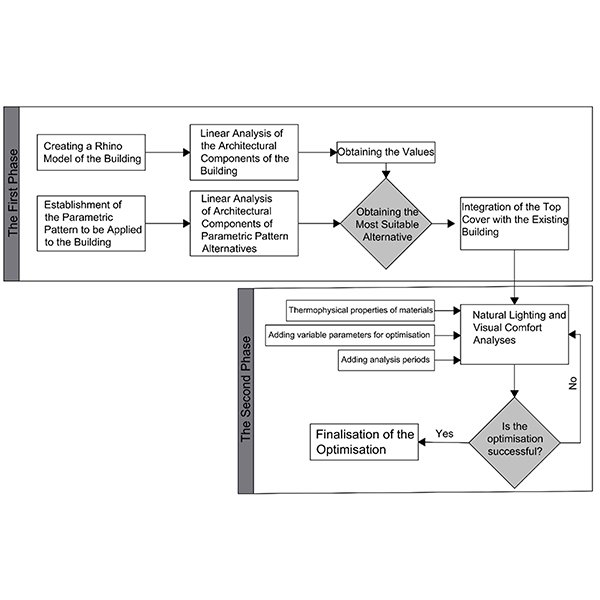
RESEARCH ARTICLE
Parametric Exploration of Natural Lighting and Visual Comfort in Contemporary
The re-functioning of historical buildings frequently necessitates new additions. This is particularly relevant for historical buildings with open courtyards, where interventions often involve the installation of upper covers using contemporary materials and techniques This issue can become especially apparent in historical buildings that are completely enclosed with transparent materials, raising concerns about the greenhouse effect and its potential to compromise indoor comfort.
Journal of Daylighting 12 (2025) 506-519
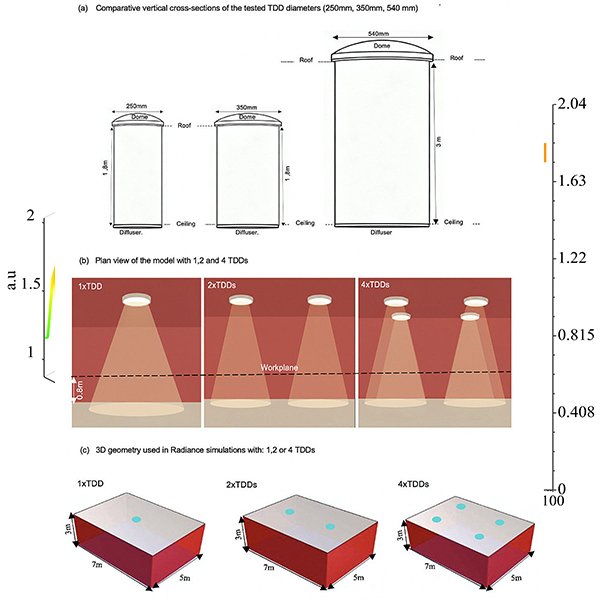
RESEARCH ARTICLE
Multi-Criteria Optimization of Tubular Daylighting Devices for Classrooms in
In educational architecture, particularly in high-solar climates, achieving a balance between ample daylight and visual comfort is a significant challenge.
Journal of Daylighting 12 (2025) 491-505

RESEARCH ARTICLE
Multi-objective Optimization of Girih Tile Patterns and Colored Glass
Efficient energy use is vital in architecture, and the building envelope plays a key role in aesthetics, thermal comfort, energy efficiency, and natural lighting.
Journal of Daylighting 12 (2025) 441-467

REVIEW ARTICLE
Human Interaction with Urban Morphology under the Influence of Urban
Outdoor urban spaces are essential to residents’ well-being, yet their thermal comfort is increasingly compromised by urbanization and climate change. .
Journal of Daylighting 12 (2025) 468-490
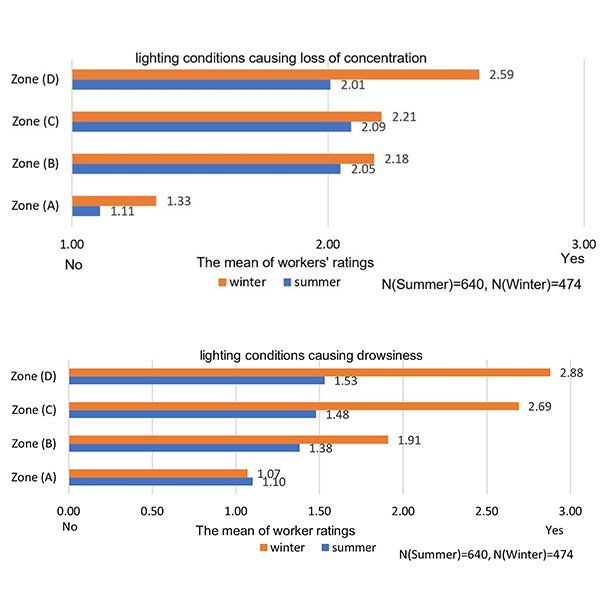
RESEARCH ARTICLE
Evaluating the Impact of Lighting Conditions on Workers’ Safety and
Lighting is a key element of design that plays a significant role in affecting workers’ health and safety in industrial workspaces. Given the scarcity of scientific studies addressing visual environments in relation to workers health in industrial buildings, this field study was conducted to explore workers' responses to multiple lighting scenarios inside production halls on their occupational health and safety in six factories in Sadat City, Egypt. .
Journal of Daylighting 12 (2025) 420-440
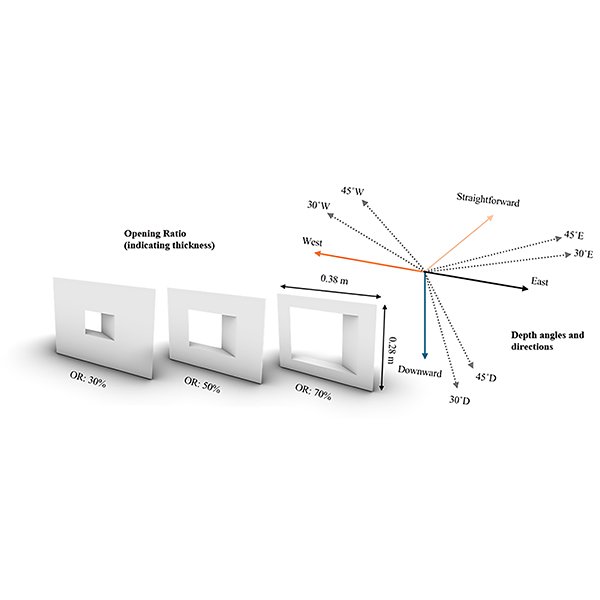
RESEARCH ARTICLE
Evaluating Daylighting Performance of Parametric Mashrabiya in Mediterranean Climate: A
This study examines the daylighting performance of parametric Mashrabiya-inspired shading devices in a Mediterranean climate, aiming to enhance occupant comfort and visual performance.
Journal of Daylighting 12 (2025) 397-419
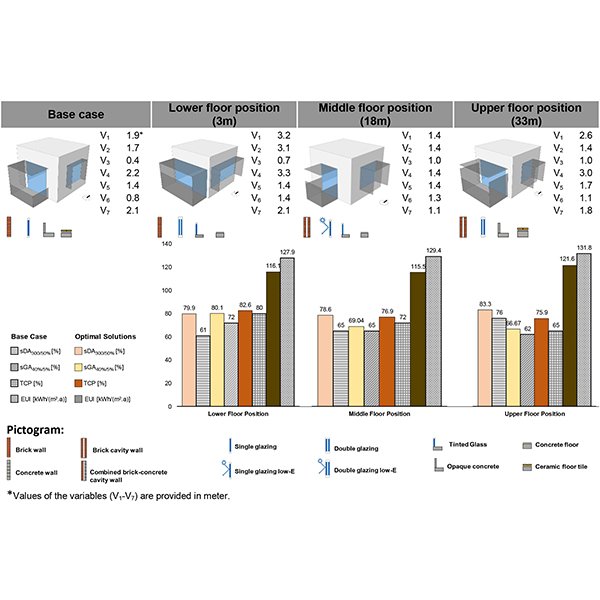
RESEARCH ARTICLE
Height-Responsive Balcony-Integrated Envelope Design for High-Rise Residential
Balconies function as essential shading elements within the building envelope, playing a critical role in regulating occupant comfort and energy efficiency.
Journal of Daylighting 12 (2025) 375-396
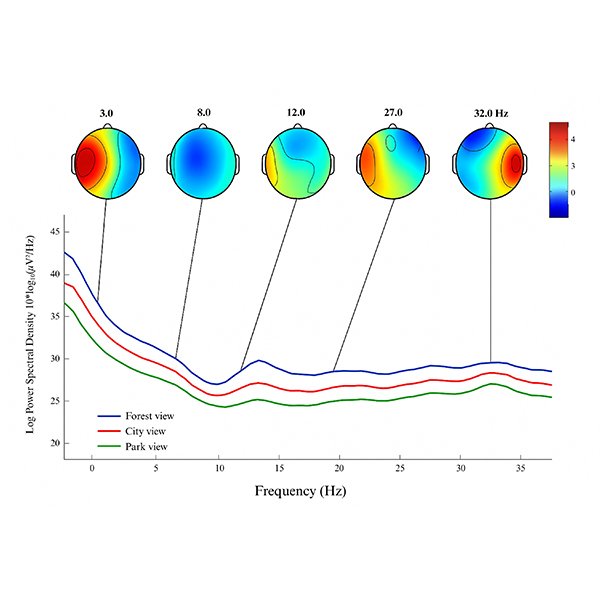
RESEARCH ARTICLE
EEG-Based Neurophysiological Responses to Classroom Window Views in Green
This study examines the neurophysiological responses of students to different classroom window views - forest, park, and city - within energy-efficient, green campus environments.
Journal of Daylighting 12 (2025) 359-374
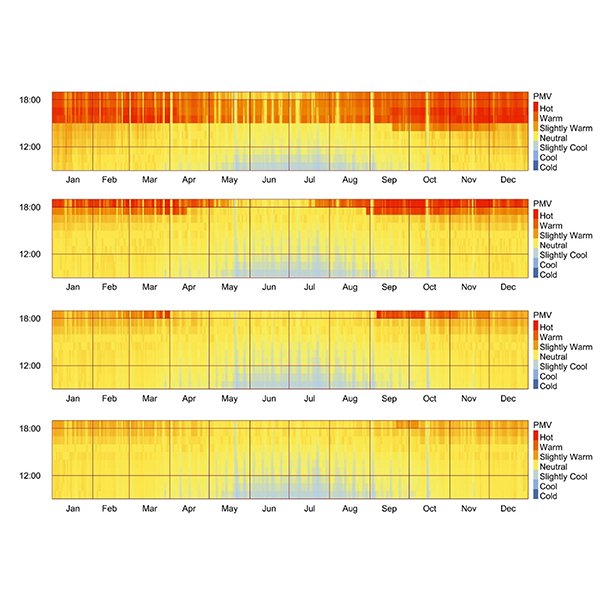
RESEARCH ARTICLE
Enhancing Year-Round Thermal Comfort with Solar Control Films: A
Windows significantly contribute to thermal discomfort in high solar irradiance climates by allowing excessive heat gains and uneven indoor temperatures.
Journal of Daylighting 12 (2025) 343-358
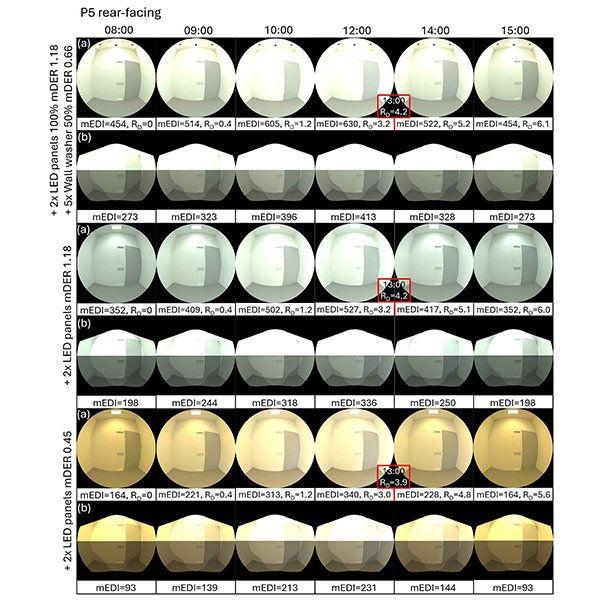
RESEARCH ARTICLE
Evaluating Visual and Beyond-Vision Light Effects and Energy Consumption
Light influences human physiology and psychology through visual and beyond-visual effects, collectively termed ‘integrative lighting.’ Human responses depend on luminous (quantity, spectrum, directionality) and temporal (timing, duration, history) factors, yet no studies examined their combined influence on integrative lighting. Th.
Journal of Daylighting 12 (2025) 306-342
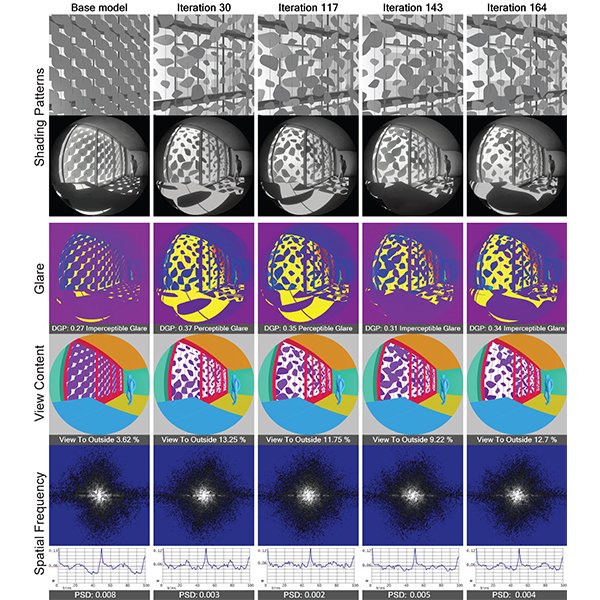
RESEARCH ARTICLE
Occupant-Centric Visual Comfort Assessment and Optimization of Passive Solar
This study introduces a comprehensive computational framework integrating image-based simulations, spatial frequency analysis, and multi-objective optimization to evaluate and optimize passive solar shading devices from an occupant-centric perspective.
Journal of Daylighting 12 (2025) 293-305
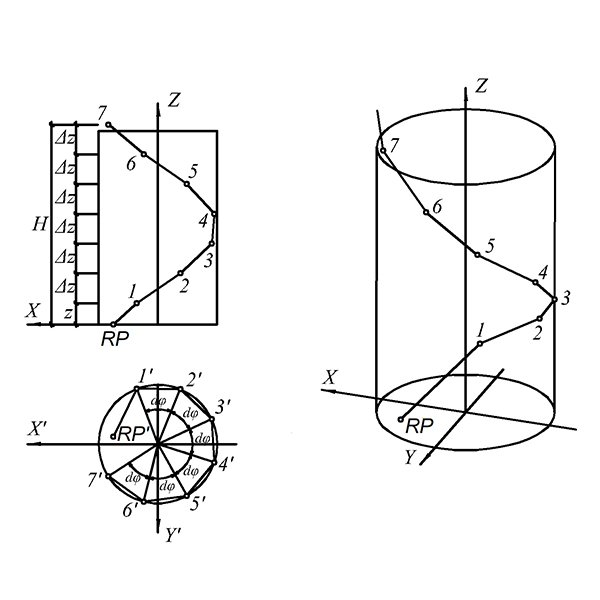
RESEARCH ARTICLE
Determination of Efficiency of the Vertical Specularly Reflecting Cylindrical Light
Article is devoted to determination of efficiency of the vertical specularly reflecting cylindrical light shaft for various types of the firmaments standardized by CIE (International Commission on Illumination).
Journal of Daylighting 12 (2025) 278-292
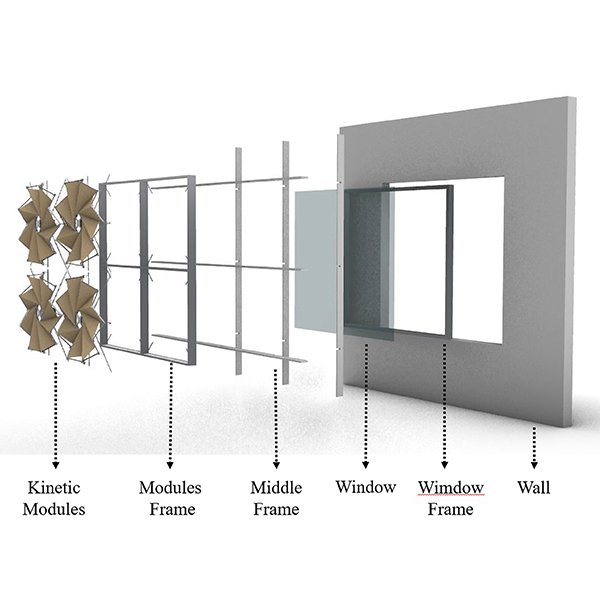
RESEARCH ARTICLE
Designing a Kinetic Façade to Control Glare: Inspiration of
In this study, to control glare in buildings with glass facades, a kinetic facade was designed using a pattern inspired by nature. Accordingly, in this study, due to the essential similarity of buildings with plants regarding the inability to move and location, in the first step, plants and their morphology were examined.
Journal of Daylighting 12 (2025) 265-277

RESEARCH ARTICLE
Tessellation-Based Origami-Inspired Movable Façade for Daylighting and
This study emphasizes the importance of daylight performance in interior spaces as a critical factor in achieving global Sustainable Development Goals, including energy efficiency, environmental sustainability, and healthy living conditions.
Journal of Daylighting 12 (2025) 252-264
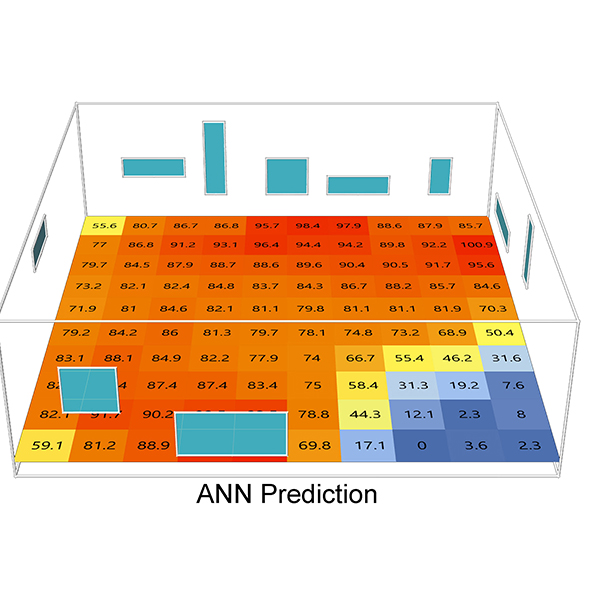
RESEARCH ARTICLE
Unfolding 3D Space into Binary Images for Daylight Simulation via
Daylighting plays a crucial role in building science, impacting both occupants’ well-being and energy consumption in buildings. Balancing the size of openings with energy efficiency has long been a challenge. .
Journal of Daylighting 10 (2023) 204-2013
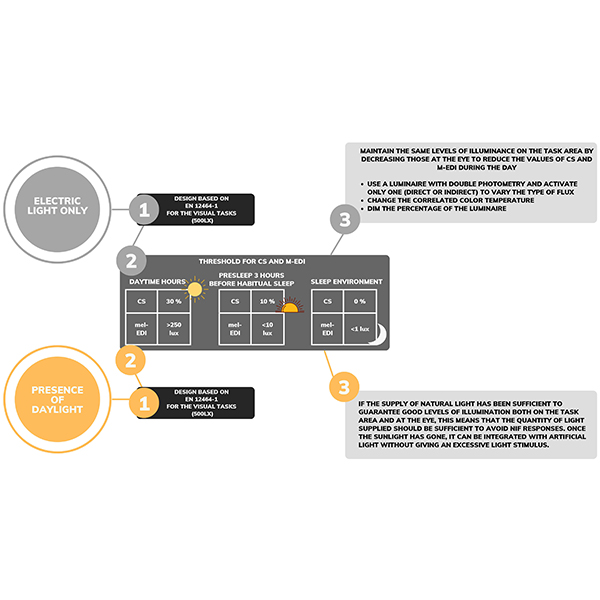
RESEARCH ARTICLE
Integrative Lighting Design: How to Optimize Visual and Non-visual
The objective of this paper is to outline fundamental principles for the electric lighting design of workplace environments such as offices. The study considers both the suggested guidelines and values for non-visual light design and the specifications for visual tasks dictated by the EN 12464-1:2021.
Journal of Daylighting 10 (2023) 192-203
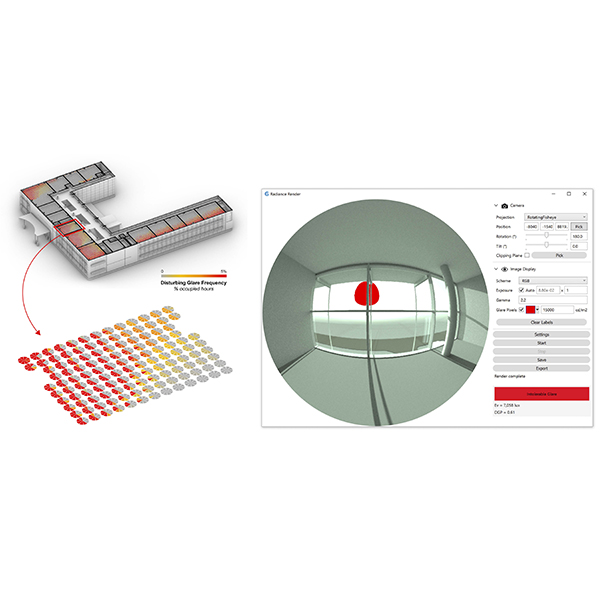
RESEARCH ARTICLE
The Effect of Parametric Patterned Façade Variations on Daylight
Parametric design influences on building envelope design are exponentially increasing in the current era due to the dominance of computational design on architectural outcomes.
Journal of Daylighting 10 (2023) 173-191
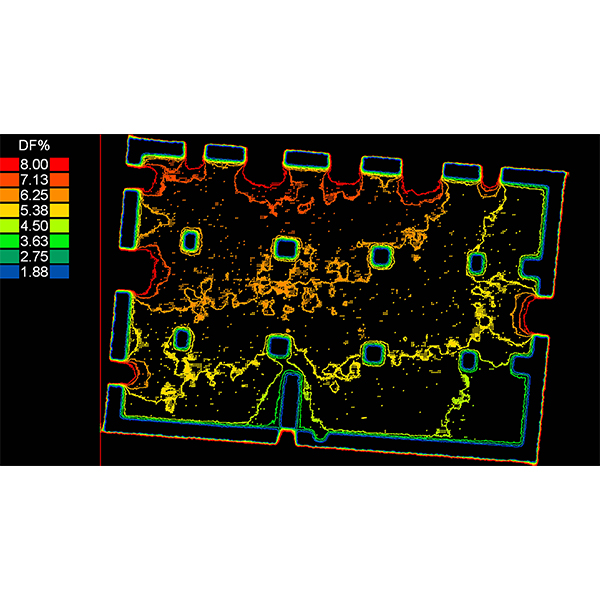
RESEARCH ARTICLE
Analysing the Daylighting Performance of the Main Prayer-hall in
This paper studies the daylighting quality of the indoor prayer-hall in The Great Upper Mosque of Hama city in Syria, highlighting this distinctive historical converted building that has been functioning as a mosque since the entry of Islam in the 6th century AD.
Journal of Daylighting 10 (2023) 153-172
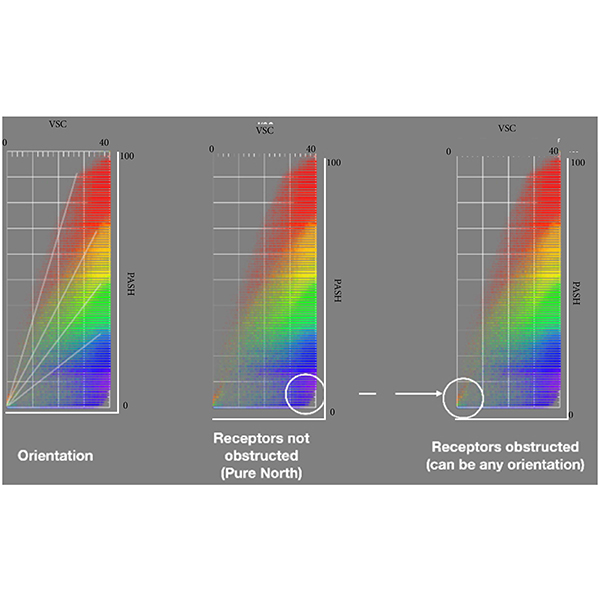
RESEARCH ARTICLE
Sunlight-Daylight Signature: a Novel Concept to Assess Sunlight and
Daylighting and solar availability at urban scale has come to play a crucial role in the perception of discomfort conditions for people, both in outdoor and indoor spaces, and on the energy consumption of buildings.
Journal of Daylighting 10 (2023) 136-152
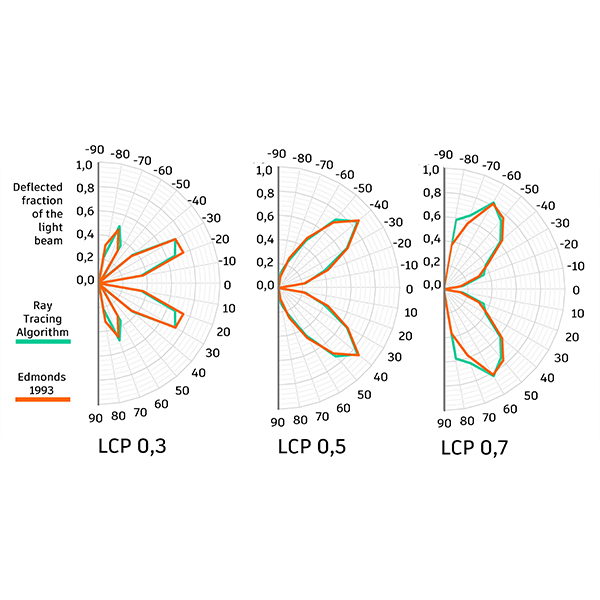
RESEARCH ARTICLE
Ray Tracing Algorithm to Simulate Laser-Cut Panel Light-Redirecting
Daylighting simulation software is an important tool to improve the quality of building design and to improve the quality of the built environment. For its application to correspond to reality, its algorithm needs to reflect real behaviour in the best possible way.
Journal of Daylighting 10 (2023) 87-98
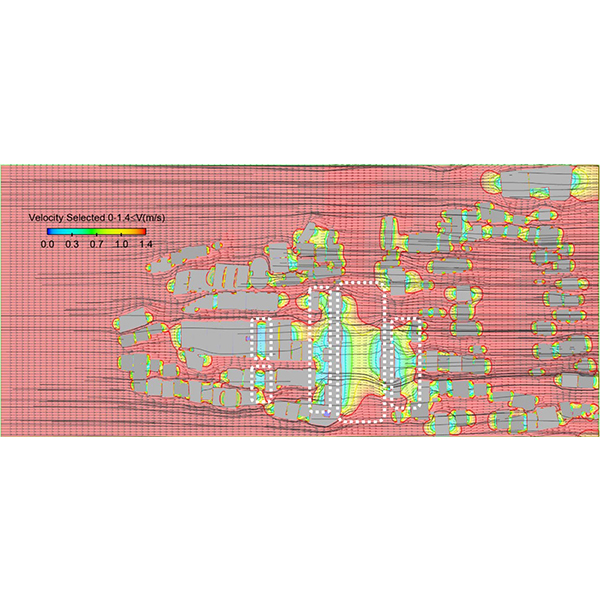
RESEARCH ARTICLE
The Effects of Orientation and Width of Space Between Buildings
Excessive heat in the high-rise urban fabric has contributed to pedestrian and occupants' discomfort. Establishing wind circulation in space with an environmentally compatible and optimal configuration is necessary to improve comfort in this region.
Journal of Daylighting 10 (2023) 99-116
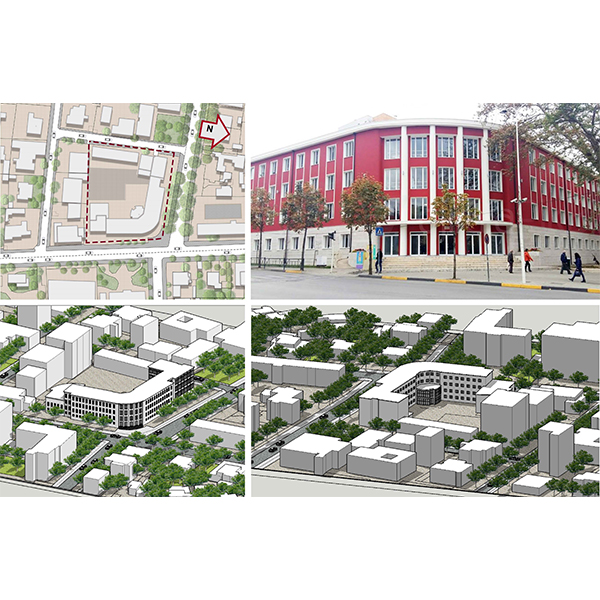
RESEARCH ARTICLE
Evaluation of the Visual Comfort and Daylight Performance of the
The daylight in classrooms is a crucial aspect that affects the quality of the learning environment and the overall performance of the students. Visual arts, such as painting, sculpture, carving, textile design and photography, require specific lighting conditions, which are different from the regular classroom standards.
Journal of Daylighting 10 (2023) 117-135
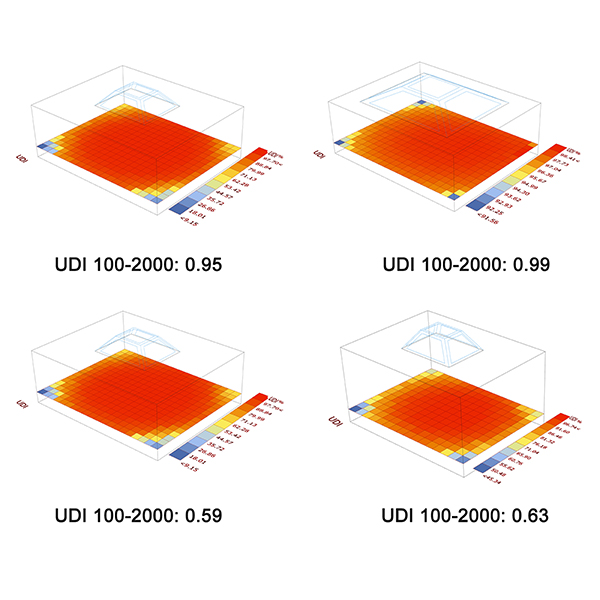
RESEARCH ARTICLE
Design Optimization of the Skylight for Daylighting and Energy Performance
In terms of sustainable design, lateral windows and skylights are important. Daylighting has become a vital component in office buildings because it increases occupants' productivity, well-being, and energy savings via windows and skylights.
Journal of Daylighting 10 (2023) 72-86

RESEARCH ARTICLE
The Architectural Design of Building Façade Models Related to
Lighting control integrated with daylighting is recognized as an important and useful strategy in energy efficient building design. One of the right factors to reduce energy consumption for artificial lighting during the day is the maximum utilization of sunlight.
Journal of Daylighting 10 (2023) 60-71

RESEARCH ARTICLE
Evaluation of Occupants’ Visual Perception in Day Lit Scenes: A
Daylight improves indoor environmental quality, the physical and mental health of occupants, and their efficiency. Research in the area of human-centric lighting that considers the visual and non-visual effects of light on human vision, have focused on examining human visual perception in response to a wide variety of lighting aspects.
Journal of Daylighting 10 (2023) 45-59

RESEARCH ARTICLE
Impact of Window Design on Dynamic Daylight Performance in an
Window design affects the building's appearance. Besides, it has a significant impact on daylight performance and the visual comfort of interior spaces.
Journal of Daylighting 10 (2023) 31-44

RESEARCH ARTICLE
Visual Comfort Assessment of Hospital Patient Rooms with Climate Responsive
As advanced technologies become prevalent, they are being used more widely in numerous fields. The building sector is not an exception. One of these cutting-edge technologies is responsive facades, which are used in buildings and have an undeniable effect on daylighting.
Journal of Daylighting 10 (2023) 17-30

RESEARCH ARTICLE
Biomimicry as an Approach to Improve Daylighting Performance in Office
Biomimicry inspired architects to solve complex design problems and develop adaptive solutions for enhancing the environmental quality. Fields of inspiration include energy efficiency, natural ventilation, daylighting, and structural stability.
Journal of Daylighting 10 (2023) 1-16
Article Publishing Charge (APC)
No publication fees are charged to authors, and articles are published as open access.
Publication timeline
| 3 days
Submission to first decision |
50 days
Submission to acceptance |
70 days
Submission to publication |
Editorial board

Dr Boon Han Lim
Universiti Tunku Abdul Rahman, Malaysia

Dr Arsenio Barbón
University of Oviedo, Spain

Dr Paola Sansoni
CNR-INO, Italy
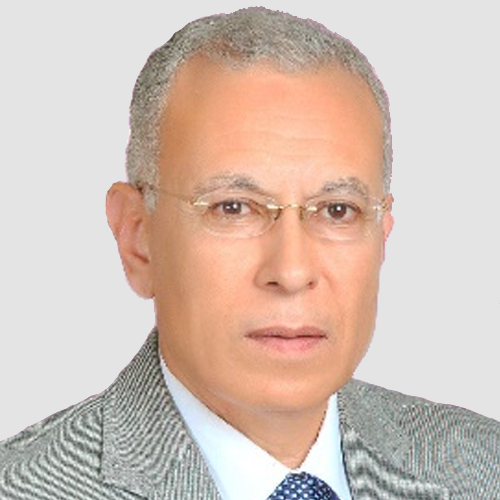
Prof. Nabil Elminshawy
Port Said University, Egypt

Dr Guiqiang Li
University of Science and Technology of China, China

Dr Ferdinando Salata
University of Rome, Italy

Prof Laura Bellia
University of Naples Federico II, Italy

Dr Susana Lagüela López
University of Vigo, Spain

Prof. Yuehong Su
University of Nottingham, UK

Prof. Önder Güler
Istanbul Technical University, Türkiye

Prof Umberto Berardi
Politecnico di Bari, Italy

Prof. Barbara Szybinska Matusiak
NTNU, Norway

Prof. Antonio Manuel Peña García
University of Granada, Spain

Dr Valerio Roberto Maria LO VERSO
Politecnico di Torino (Polytechnic University of Turin), Italy

Dr. Kacem Gairaa
center for renewable energy development, Algeria
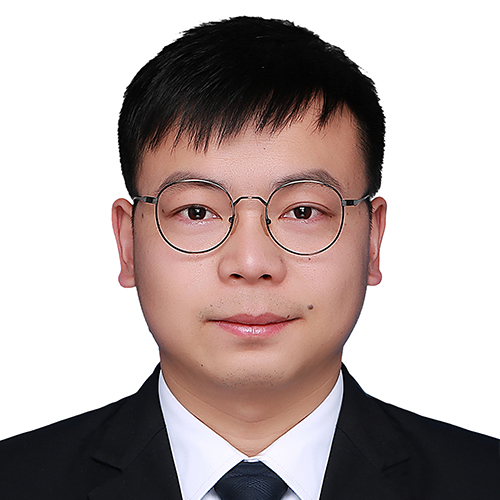
Wei Wang
Southeast University, 中国

Dr Ahmed A. Y. Freewan
Jordan University of Science and Technology, Jordan

Dr jian yao
Ningbo University, China

Dr Paula M. Esquivias
University of Granada, Spain

Dr Francesco Sommese
University of Naples Federico II, italy

Dr Rizki A. Mangkuto
Institut Teknologi Bandung, Indonesia

Dr Hui Lv
Hubei University of Technology, China

Dr. Francesca Fragliasso
University of Naples Federico II, Italy

Dr Doris Abigail Chi Pool
Universidad de las Américas Puebla, Mexico

Dr. Feride Şener Yılmaz
Istanbul Technical University, Turkey

Omid Nematollahi
Isfahan University of Technology, South Korea

Dr Petar Pejic
University of Niš, Serbia

Dr Lim Yaik Wah
Universiti Teknologi Malaysia, Malaysia

Dr Osama Mohamed Omar
University of Bahrain , Bahrain

Dr Marina Bonomolo
University of Palermo, Italia

RESEARCH ARTICLE
The Role of Orosi’s Islamic Geometric Patterns in the
The form of the building facade significantly affects the amount of useful daylight admitted in the interior space. Striking a balance between the visual comforts of occupants and taking advantage of daylight is always a challenge and, therefore, investigating complex, geometric forms of Orosi patterns can be an effective way of improving visual comfort alongside the aesthetic aspects.
Journal of Daylighting 7 (2020) 201-221

RESEARCH ARTICLE
Economic and Energy Efficiency of Artificial Lighting Control Systems for
The aim of the research is to determine the economic and energy efficiency usage of the artificial lighting control systems, with the help of astronomical relays and motion sensors, by various types of light sources for the stairwells (stair landings and staircases) of multistory residential buildings.
Journal of Daylighting 7 (2020) 93-106

RESEARCH ARTICLE
A Combined Method for an Exhaustive Investigation of the Anidolic
Lighting quality in office environments is a broad concept that must be taken into account in the design stage to deliver comfortable spaces to reduce workers' stress.
Journal of Daylighting 8 (2021) 149-164

RESEARCH ARTICLE
Optimization of Daylighting Design Using Self-Shading Mechanism in Tropical
Despite its potential, daylighting strategies in school classrooms in the tropical climate regions is little explored in the literature. The use of two-sided or bilateral daylight opening, as well as the self-shading mechanism using sloped walls, are currently seen as potential strategies to achieve good daylighting in tropical buildings.
Journal of Daylighting 9 (2022) 117-136

RESEARCH ARTICLE
A Methodology to Link the Internal Heat Gains from Lighting
This paper critically discusses the procedure prescribed by the Italian Technical Standards to account for the internal gains in the calculation of the energy performance indices for a building.
Journal of Daylighting 1 (2014) 56-67

RESEARCH ARTICLE
Impact of Furniture Layout on Indoor Daylighting Performance in Existing
Currently, home-based computing workspaces have developed substantially all over the world, especially in Malaysia. This growing trend attracts computer workers to run a business from their residential units.
Journal of Daylighting 5 (2018) 1-13

RESEARCH ARTICLE
Effective Use of Daylight in Office Rooms
The rational use of daylight can significantly reduce the cost of electricity for artificial lighting. This research aims at investigating the parameters of translucent structures of building envelope, and the value of daylight factor, for which maximum efficiency of daylight usage is achieved in office rooms.
Journal of Daylighting 7 (2020) 154-166

RESEARCH ARTICLE
Impact of Building Typology on Daylight Optimization Using Building Information
Daylight represents one of the crucial factors that affect directly on the building performance and its occupants. This study assesses the daylight performance in the multi-storey residential buildings (apartments) in Erbil city.
Journal of Daylighting 6 (2019) 187-201

RESEARCH ARTICLE
Comparative Investigation of Daylight Glare Probability (DGP) Comfort Classes in
Glare is considered one of the most important variables to reach visual comfort and visual quality. It represents one of the fundamental barriers for an effective use of daylighting in buildings.
Journal of Daylighting 8 (2021) 284-293

SHORT COMMUNICATION
No-Greenery Line and Greenery-View Factor, New Architectural Design
The paper proposes a new tool for evaluation of the degree of visual contact with the outdoor greenery, the Greenery-View factor (GV), intended to be easy to grasp and simple to use.
Journal of Daylighting 7 (2020) 282-286

RESEARCH ARTICLE
An Approach to Determine Specific Targets of Daylighting Metrics and
This study comes from an integrated approach combining daylighting and thermal aspects of building spaces. Several room configurations derived from the combination of four main design variables are tested.
Journal of Daylighting 8 (2021) 1-19

RESEARCH ARTICLE
Design and Simulation of a Circadian Lighting Control System Using
This paper introduces a fuzzy logic-based circadian lighting control system using flexibility of Light-Emitting Diode (LED) lighting technology to synchronise artificial lighting with circadian (natural) lighting Correlated Colour Temperature (CCT) characteristics.
Journal of Daylighting 9 (2022) 64-82

REVIEW ARTICLE
A Review on Solar Concentrators with Multi-surface and Multi-
Solar concentrator always plays an important role in solar energy collection as it could enhance the energy density effectively. Various structures of solar concentrators have been researched in recent years, among which multi-surface (MS) and multi-element (ME) combinations are the two typical structures.
Journal of Daylighting 6 (2019) 80-96

RESEARCH ARTICLE
Power Factor Correction of Compact Fluorescent and Tubular LED Lamps
Compact Fluorescent Lamps (CFLs) and Light-emitting Diode (LED) lamps have received wide acceptance in lighting applications during the last few years.
Journal of Daylighting 7 (2020) 73-83

RESEARCH ARTICLE
Evaluation of Daylight and Glare Quality of Office Spaces with
There has been an increasing awareness in recent years about the evaluation of daylight and glare quality in buildings. In the study, an office space with a flat and a dynamic shading system facade (triangular cell facade) is discussed in the province of Mardin, which is in a hot and arid climate zone.
Journal of Daylighting 9 (2022) 197-208

RESEARCH ARTICLE
Solar Energy Gain and Space-Heating Energy Supply Analyses for
A considerable effort is devoted to devising retrofit solutions for reducing space-heating energy in the domestic sector. Existing UK solid-wall dwellings, which have both heritage values and historic fabric, are being improved but yet they tend to have meagre thermal performance, partly, due to the heat-loss through glazings.
Journal of Daylighting 4 (2017) 15-25

RESEARCH ARTICLE
Design of a Multi-Surface Solar Concentrator
A multi-surface solar concentrator is proposed in this study. The concentrator is designed by improving the light receiving rate of a parabola when the incident angle changes within 0°~20° by adding involute, shifting the involute up, and changing the shape of the parabolic top. .
Journal of Daylighting 6 (2019) 176-186

RESEARCH ARTICLE
Lighting Energy Saving with Light Pipe in Farm Animal Production
The Swedish animal production sector has potential for saving electric lighting of €4-9 million per year using efficient daylight utilisation. To demonstrate this, two light pipe systems, Velux® (house 1) and Solatube® (house 2), are installed in two identical pig houses to determine if the required light intensity, daylight autonomy (DA), and reduced electricity use for illumination can be achieved. In.
Journal of Daylighting 2 (2015) 21-31

RESEARCH ARTICLE
Development of Fresnel-based Concentrated Photovoltaic (CPV) System with Uniform
Different designs have been presented to achieve high concentration and uniformity for the concentrated photovoltaic (CPV) system. Most of the designs have issues of low efficiency in terms of irradiance uniformity.
Journal of Daylighting 1 (2014) 2-7

RESEARCH ARTICLE
Evaluation of Daylight Availability for Energy Savings
Dynamic daylight simulations are very useful instruments in daylighting design process. They allow an in depth analysis of indoor daylight availability levels and define if they are adequate to perform a particular visual task.
Journal of Daylighting 2 (2015) 12-20

RESEARCH ARTICLE
Optical Analysis of a New Solar Distiller with Cylindrical Surface
In this paper, a new solar distiller floating on ocean with cylindrical surface concentrator and vertical gap evaporator is proposed for solving the problem of freshwater shortage in islands.
Journal of Daylighting 8 (2021) 100-109

RESEARCH ARTICLE
Optical Characteristic Investigation on an Underwater Adjustable Focus Solar Concentrator
This paper presents an underwater adjustable focus solar concentrator, which is composed of a piece of transparent elastic membrane and a hollow cylindrical-like structure.
Journal of Daylighting 6 (2019) 169-175

RESEARCH ARTICLE
Assessment of the Thermal Performance of Vertical Green Walls Using
Construction of multifunctional building envelopes using vertical greenery walls (VGW) has emerged as a sustainable green technology to improving cooling efficiency.
Journal of Daylighting 8 (2021) 294-312

RESEARCH ARTICLE
Parametric Analysis of Architectural Elements on Daylight, Visual Comfort, and
The quality of visual comfort has always been an essential element considering human comfort. Providing visual comfort in a living environment reduces the need for artificial lighting, which subsequently has a direct relationship with energy consumptions and its expenses.
Journal of Daylighting 7 (2020) 57-72

RESEARCH ARTICLE
Annual Performance Assessment of Complex Fenestration Systems in Sunny Climates
Complex Fenestration Systems (CFS) are advanced daylighting systems that are placed on the upper part of a window to improve the indoor daylight distribution within rooms.
Journal of Daylighting 2 (2015) 32-43
 HOME
HOME